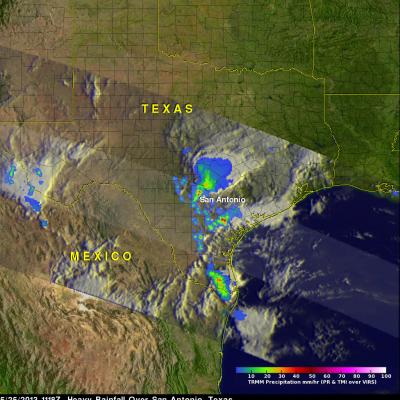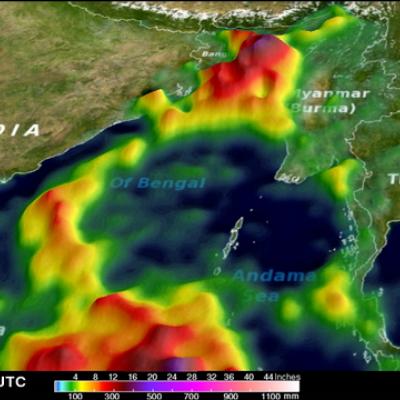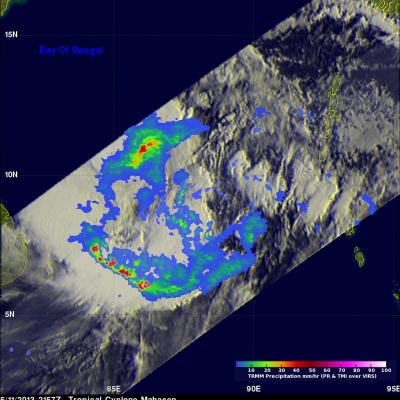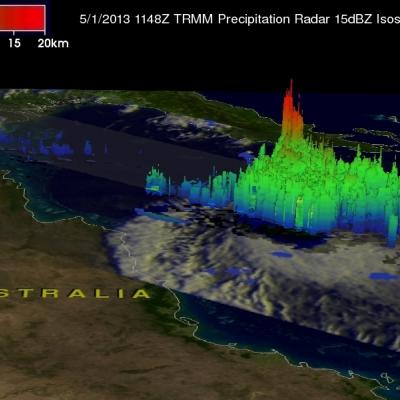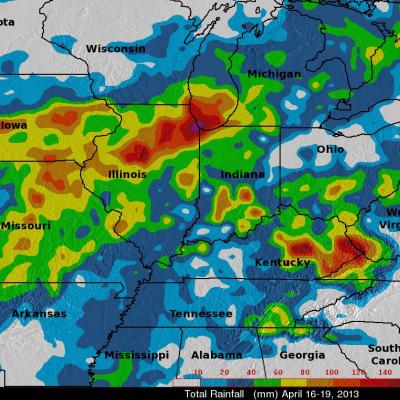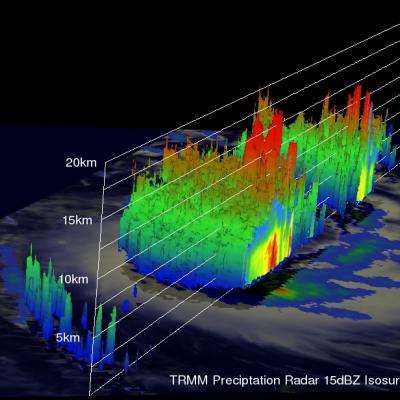Hurricane Barbara Comes Ashore in Southern Mexico
Hurricane Barbara recently made landfall along the southern Pacific coast of Mexico. According to the National Hurricane Center (NHC), the center of the storm came ashore around 19:50 UTC (12:50 pm PDT) Wednesday May 29th about 35 km (~20 miles) west of Tonala, Mexico as a minimal Category 1 hurricane with maximum sustained winds of 75 mph. TRMM captured the first image of Barbara several hours after it made landfall. The image was taken at 6:46 pm PDT 29 May (01:46 UTC 30 May) 2013 and shows the horizontal distribution of rain intensity within the storm. Rain rates in the center of the swath



